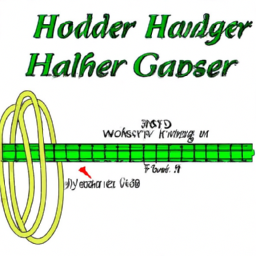Garden Hose How Many GPM
Table of Contents []
- How Many Gallons Per Minute Garden Hose
- 1. Types of Garden Hoses
- 2. Garden Hose Length
- 3. Hose Diameter
- 4. Inlet Pressure
- 5. Hose Fittings
- 6. Hose Nozzles
- 7. Use of Accessories
- 8. Temperature of the Water
- 9. Flow Restrictions
- 10. System Pressure
- 11. Type of Water Source
- 12. Pressure Relief Valves
- Final Word
How Many Gallons Per Minute Garden Hose
How Many Gallons Per Minute Does a Garden Hose Produce?
Garden hoses are an indispensable part of any gardener's tool set. If you're looking to know how much water your garden hose can deliver, you need to consider the gallons per minute it can produce. Let's explore this topic in-depth in this article with 8-12 central themes.
1. Types of Garden Hoses
The amount of water a garden hose produces may depend on the type of hose you're using. There are three types of garden hoses you can consider: vinyl, rubber, and metal. Vinyl hoses are generally more lightweight but may not be as durable. Rubber hoses may be heavier and less flexible, but they can be useful for larger jobs as they are also quite durable. Metal hoses are the most durable of the three but may be harder to maintain.
2. Garden Hose Length
The length of the garden hose is essential when estimating the gallons per minute of water it can produce. With a longer garden hose, the pressure of the water may be lower, resulting in a lower flow rate of water. On the other hand, a shorter garden hose can ensure better pressure and flow of water.
3. Hose Diameter
The diameter of the garden hose is another essential factor that can affect its gallons per minute capacity. Garden hoses come in various sizes, ranging from inch to 1 inches. The larger the diameter, the higher the gallons per minute or water flow. So, depending on your requirement, you can choose the ideal size to meet your needs.
4. Inlet Pressure
Inlet pressure is the pressure of water coming from the tap or hose line that is supplying the water to the garden hose. It's important because it can directly affect the gallons per minute of water produced. If the inlet pressure is too low, it may affect how much water the garden hose can produce.
5. Hose Fittings
Different garden hoses have different fittings to ensure they are securely attached to the tap or hose line. The size and shape of the hose fitting can also influence the gallons per minute of water they can produce. If the garden hose is not properly connected, it may result in a lower gallons per minute capacity.
6. Hose Nozzles
Different types of nozzles can be used with a garden hose to affect its water flow. Higher and narrower nozzles can ensure the water flow is higher while wider and lower nozzle can result in a lower gallons per minute capacity.
7. Use of Accessories
The use of accessories can impact the water flow and gallons per minute capacity of the garden hose. For example, a filter can be connected to the hose to strain out any large particles but can also reduce the gallons per minute water flow. Similarly, there are other accessories that can achieve similar effects.
8. Temperature of the Water
The temperature of the water can also influence the gallons per minute capacity of the garden hose. Warmer water may help to decrease the resistance of the water through the hose, thus increasing the water flow or gallons per minute capacity.
9. Flow Restrictions
Flow restrictions due to various reasons can decrease the gallons per minute of a garden hose. These restrictions could be due to narrowing of the hose due to a kink, or due to a faulty or blocked connection. If any of these restrictions occur, it may result in a decrease in the gallons per minute of water.
10. System Pressure
The system pressure of the overall garden hose system can also impact the gallons per minute water flow. The system pressure refers to the pressure of the water supplied by source; it usually increases as the water moves further along the hose. If the system pressure is too low, it may lead to a decrease in the gallons per minute capacity of the garden hose.
11. Type of Water Source
The type of water source from which the garden hose draws can also affect the gallons per minute it produces. If the water is from from a tap, the gallons per minute produced will usually be lower as compared to a lake or pond.
12. Pressure Relief Valves
Some garden hoses come with pressure relief valves that can be used to reduce the pressure of the water flowing from the hose. These valves are usually adjustable, and can be used to decrease the pressure of the water to a point where more gallons per minute of water can be produced.
Final Word
The gallons per minute of water a garden hose can produce relies on several factors. From the length and diameter of the garden hose to the temperature of the water and the system pressure, these different elements all contribute to how much water a garden hose can deliver. Thankfully, you can usually adjust or optimize these factors to help increase the gallons per minutes your garden hose can produce.
Takeaways:
Different types of garden hoses can produce different gallons per minute
Larger diameter hoses can usually produce more gallons per minute of water
The length, fittings, and nozzles of the hose also affect its water flow
Accessories, system pressure, temperature, and flow restrictions can also influence the gallons per minute capacity of a garden hose
Adjusting or optimizing any of the factors can help to enhance the gallons per minute your garden hose can produce

Previous Page
Next Page
